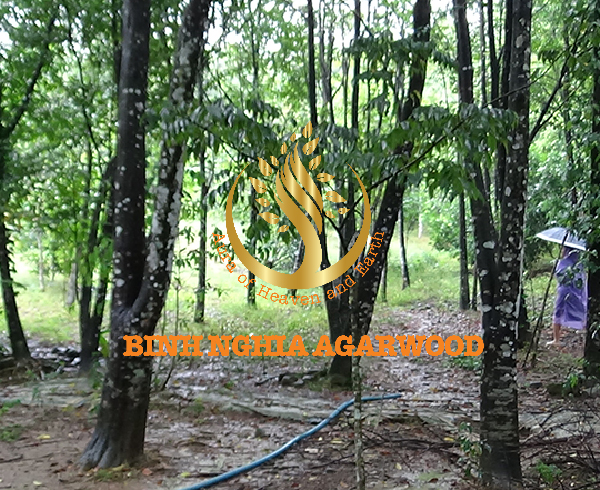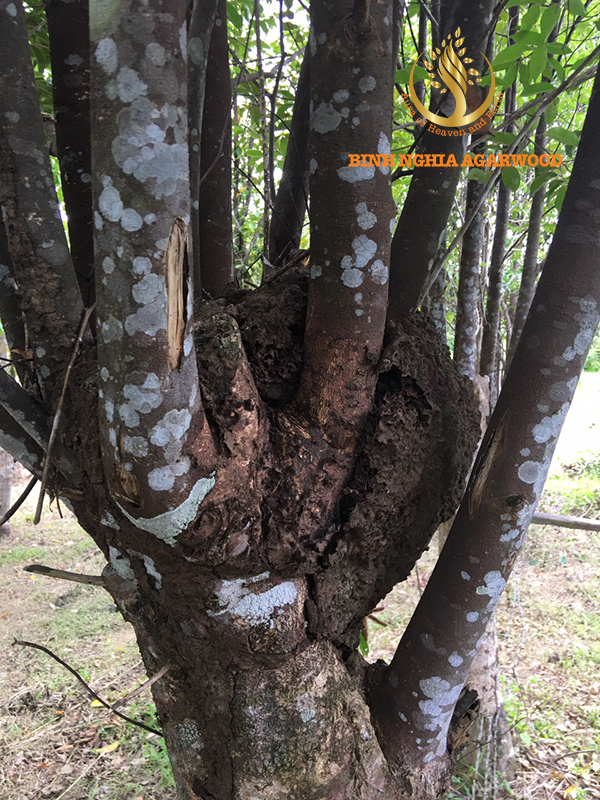What is CITES and why does Agarwood trade require CITES?

CITES regulations.
CITES, the Convention on International Trade in Endangered Species of Wild Fauna and Flora, is a global treaty aimed at regulating and controlling international trade in wildlife and plants, including many species of agarwood-producing trees. The treaty's primary objective is to ensure that international trade does not threaten the survival of species listed under its appendices. CITES regulations play a crucial role in conserving endangered species, including those used in trade for their agarwood.
CITES operates through a framework that categorizes species into three appendices, each with varying levels of protection:
Appendix I: This appendix includes species that are highly endangered and threatened with extinction. International trade in specimens of Appendix I species is generally prohibited, except in exceptional circumstances. Some agarwood-producing tree species, such as Aquilaria malaccensis, are listed in Appendix I.
Appendix II: Species listed in this appendix are not necessarily threatened with extinction but may become so unless trade is controlled. Most agarwood-producing tree species are listed in Appendix II. Trade in specimens of these species is allowed but is subject to specific regulations to ensure that it is sustainable and does not harm the survival of the species.
Appendix III: This appendix includes species that are protected by at least one country that is a CITES member. International trade in these species is regulated at the request of the country seeking the protection.
CITES places the responsibility on its member countries to enforce its regulations, monitor trade, and report on their conservation efforts. Member countries (known as Parties) are required to enact and enforce national legislation to implement CITES regulations.
For agarwood-producing trees and their products, CITES regulations often involve:
The issuance of permits for the export, import, or re-export of agarwood specimens, ensuring that trade is conducted legally and sustainably.
The establishment of annual export quotas for agarwood-producing tree species to limit the amount that can be traded internationally.
The documentation of the source of agarwood specimens to prevent illegal trade and track their origins.
CITES regulations have helped address concerns related to overharvesting and the illegal trade of agarwood. However, enforcement and monitoring can be challenging, particularly in regions where resources and capacities for conservation and regulation are limited. Efforts to combat illegal logging and protect endangered species like agarwood-producing trees often require international collaboration and the engagement of local communities, conservation organizations, and law enforcement agencies.



CITES enforcement.
CITES enforcement is a crucial aspect of the treaty's implementation, as it aims to ensure that the regulations and protections provided by the Convention are effectively enforced and that international trade in wildlife and plants complies with CITES requirements. Enforcement of CITES involves a combination of measures and actions at both the international and national levels. Here are key aspects of CITES enforcement:
Legislation and Regulations: CITES requires its member countries (Parties) to enact and enforce national legislation that aligns with the provisions of the Convention. This legal framework is essential for the proper regulation of trade in CITES-listed species.
Permit Systems: CITES establishes a system of permits and certificates to control and monitor international trade. These include import, export, and re-export permits, which must be obtained before engaging in trade involving CITES-listed species. Permit systems are essential for tracking and regulating trade.
Trade Monitoring: Parties are responsible for monitoring and regulating the trade of CITES-listed species within their territories. This includes reviewing and approving permit applications, as well as conducting inspections and checks to verify the legality and sustainability of trade.
Law Enforcement: Effective law enforcement is critical for combatting illegal trade in CITES-listed species. Many countries have specialized enforcement agencies or units dedicated to wildlife and environmental crime. These units investigate and combat activities related to illegal wildlife trade, including poaching, smuggling, and the sale of illegal wildlife products.
Penalties and Prosecution: National legislation often establishes penalties for violations of CITES regulations, which can include fines, imprisonment, or other legal consequences for those involved in illegal trade. Prosecution of wildlife traffickers is essential to deter illegal activities.
Training and Capacity Building: CITES provides support and resources to member countries to build the capacity of enforcement agencies and personnel. Training programs and technical assistance help improve the skills and knowledge of those involved in enforcing CITES regulations.
International Collaboration: International collaboration is crucial in addressing the transnational nature of illegal wildlife trade. CITES facilitates cooperation and information sharing among member countries and organizations, such as INTERPOL and the World Customs Organization.
Border Control and Customs: Customs agencies at international borders play a pivotal role in detecting and preventing illegal wildlife trade. Training customs officers to identify CITES-listed species and verify permits is essential.
Public Awareness and Education: Public awareness campaigns and educational initiatives help inform the public about the importance of CITES and the need for conservation. Informed citizens can play a role in reporting illegal activities and supporting conservation efforts.
Research and Technology: Advancements in technology, such as DNA analysis and tracking systems, have become valuable tools in the enforcement of CITES regulations. They help identify the origin of specimens and detect illegal trade.
CITES enforcement efforts are continually evolving to address new challenges in the conservation of endangered species. Despite these efforts, illegal trade in wildlife and plants remains a significant global problem, and combating it requires ongoing commitment and collaboration among countries, law enforcement agencies, conservation organizations, and the public.
Other news:
• The Mystical Charm of Agarwood in Muslim Special Occasions
• Embracing the Spiritual Essence: The Significance of Agarwood During Ramadan
• Oud Mastery: The Craftsmanship of Vietnamese Agarwood in Arab Traditions
• Agarwood's Artistic Allure - ex
• Challenges Related to Agarwood. How to develop and get rich from Agarwood business
• Discuss the economic aspects of the agarwood trade in the Middle East
• Current issues of agarwood exploitation and conservation
• How is Agarwood Utilized Today?
• Applications of agarwood in modern industries
• Delving into the Spiritual Significance - What Does Agarwood Symbolize?
• Tracing the Rich History of Agarwood. Why is Agarwood So Revered?
• The Kyara - KyNam - Kinam by Binh Nghia Agarwood
• Unlocking the Mysteries of Agarwood - How is Agarwood Produced?
• Threats Looming Over Agarwood Trees: A Call to Conserve
• Agarwood: The Sacred Scent Uniting Cultures - Symbolism and Rituals Explored!
• From Ancient Remedies to Timeless Fragrances: Exploring Agarwood's Cultural Journey
• Unveiling the Mystical Power of Agarwood: How Does It Differ Across Religions?
• The Role of Fungal and Bacterial Infections in Resin Formation
• The factors that form Agarwood and the production process of Agarwood
• How is agarwood formed in the natural environment?
• Explanation of Aquilaria's Connection to Agarwood Production
• Different Species within the Aquilaria Family
• Introduction to the Aquilaria Genus
• Free health check and medicine distribution for people in Son Tay district.
• Distribution of agarwood in the world and differences in scent of agarwood in different regions.
• Agarwood and its value in culture and human life
• Historical References to Agarwood: A Fragrant Journey through Time
• Confused when determining the value of Natural Agarwood through "Agarwood Age"
• Agarwood Chip Market Analysis, Status and Business Outlook 2023 to 2030
• The export situation of Agarwood in Vietnam
• Use of Agarwood in Islamic Culture
• Using Agarwood in Buddhist Culture
• The situation of using Agarwood in Kuwait
• The situation of using Agarwood in Qatar
• The situation of using Agarwood in UAE
• The situation of importing and exporting Vietnamese agarwood to the Gulf countries
• The situation of importing and exporting Vietnamese agarwood to Saudi Arabia
• Overview of knowledge of agarwood (part 1)
• Plants of The time: Agarwood
• Agarwood facts and health benefits
• Agarwood in Ha Tinh – one of the best agarwood in Vietnam?
• Agarwood incense and things to know?
• One billion riyals, the volume of sales of the Oud market.
• Oud...a long tradition in the Middle East.
• Oud consumption volume in the Gulf
• With the finest types of oud.. This is how Eid is received in the Gulf
• Learn about the types of oud in the Gulf
• The easiest way to prepare incense at home
• Saudi scents: What are oud perfumes?
• Types of incense between natural and unnatural. How do you discover the difference?
• Incense entered the Arabian Peninsula
• The secret of incense and oud
• Oud... from the path of incense to the master of oriental perfumes
• Why is the oud used in the Gulf society?
• High quality Vietnamese Oud chips
• Oud and its impact on the perfume industry, especially in the Arabian Gulf
• Health Benefits Of Agarwood (Oud) Oil
• Feng Shui Agarwood attracts fortune and brings good luck to the family
• 6 ways to use pure Agarwood essential oil
• Agarwood - A fragrance created from heaven!
• Two rare compounds have been detected in agarwood essential oil by hydrolysis
• Agarwood pieces. Introduction and instructions on how to burn Agarwood pieces
• 100% pure Agarwood powder and how to steam it?
• How to distinguish Muhassan Oud from the Natural Oud at first sight
• The difference between a natural and Muhassan Oud
• Al-Maroki Oud: Learn what the Al-Maroki Oud is and its best types
• Where can I buy real Agarwood in Vietnam?
• How Vietnam agarwood affirms the No.1 position worldwide
• Agarwood Chips Incense High Oil Rare Agarwood from Oud Vietnam Natural Agarwood Grade A
• Wholesale Vietnamese agarwood chips
• Go to the forest to find Agarwood
• What is sinking Agarwood (Oud)? Why is the submerged Agarwood bracelet so valuable?
• Misunderstandings and not fully understood about Agarwood(Oud) oil pressed
• Difficult journey to find Tram Huong
• AGARWOOD CHIPS FROM OUD VIETNAM HIGH QUALITY
• Agarwood Crassna – The special aquilaria tree in Asia
• The difference of enjoying bass in 4 Asian countries
• Agarwood (Oud) Carving. Meaning of Using it?
• How to make a simple Agarwood (Oud) cone
• Agarwood (Oud) – An Aroma Made in Heaven!
• The following species of Agarwood produce Agarwood
• Is the best Agarwood (oud) of the world in Vietnam?
• Frequent misunderstanding about oud (agarwood)
• Difficult journey to find agarwood in forest
• Can humans create billions of dong worth of Ky Nam?
• How to buy high quality agarwood incense?
• Benefits of Agarwood oil (Oud oil)
• How to choose Agarwood bracelet that matches feng shui
• The use of Agarwood in health of life and feng-shui
• Burning Agarwood (oud): The effect and meaning of a custom
• Agarwood (OUD) is one of nature's treasures
• Why Agarwood is a present from Mother Nature?
• Why Agarwood Is So Expensive?
• What's compound in agarwood (oud) oil?
• Agarwood/Oud incense stick materials – from 1005 natural ingredients